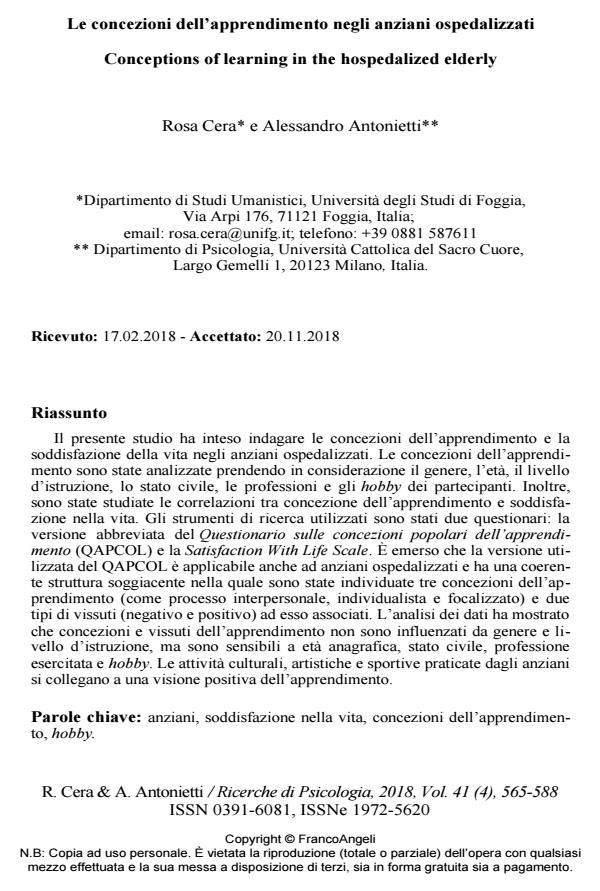Conceptions of learning in the hospedalized elderly
Journal title RICERCHE DI PSICOLOGIA
Author/s Rosa Cera, Alessandro Antonietti
Publishing Year 2019 Issue 2018/4
Language Italian Pages 23 P. 565-587 File size 238 KB
DOI 10.3280/RIP2018-004002
DOI is like a bar code for intellectual property: to have more infomation
click here
Below, you can see the article first page
If you want to buy this article in PDF format, you can do it, following the instructions to buy download credits

FrancoAngeli is member of Publishers International Linking Association, Inc (PILA), a not-for-profit association which run the CrossRef service enabling links to and from online scholarly content.
The present study aimed to investigate the conceptions of learning and the satisfaction with life in hospitalized older adults. Opinions on learning have been analyzed taking into consideration participants’ gender, age, education level, marital status, job, and hobbies. Furthermore, the correlations between the conceptions of learning and satisfaction with life have been analysed. The research tools used were two questionnaires: the abbreviated version of the Questionnaire About Popular Conceptions of Learning (QAPCOL) and the Satisfaction With Life Scale. It emerged that the abbreviated version of the QAPCOL is also applicable to hospitalized older adults and has a consistent underlying structure in which three conceptions of learning have been identified (learning as an interpersonal, individualistic, and focused process) and two types of feelings (negative and positive) associated with it. Analyses showed that conceptions of learning are not influenced by gender and education level but are sensitive to age, marital status, job, and hobbies. The cultural, artistic, and sport activities practiced by the older adults are associated to a positive view of learning.
Keywords: Older adults, satisfaction with life, conceptions of learning, hobbies
Rosa Cera, Alessandro Antonietti, Le concezioni dell’apprendimento negli anziani ospedalizzati in "RICERCHE DI PSICOLOGIA " 4/2018, pp 565-587, DOI: 10.3280/RIP2018-004002